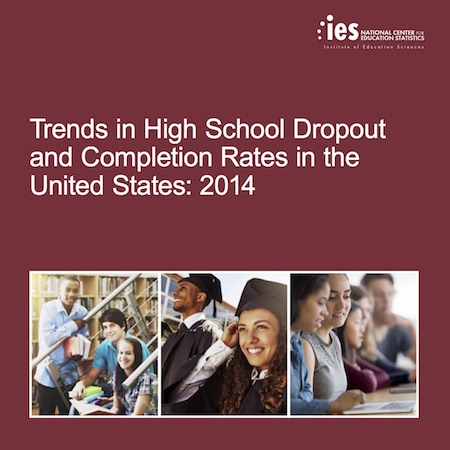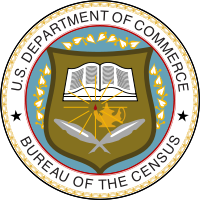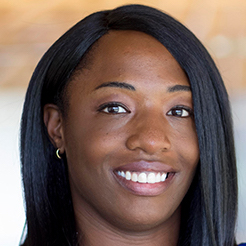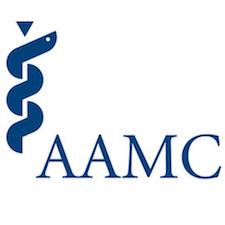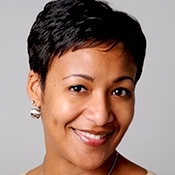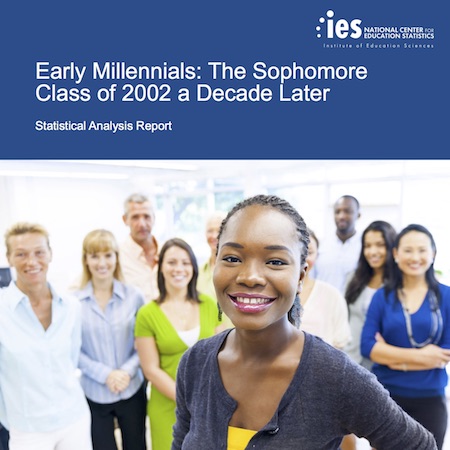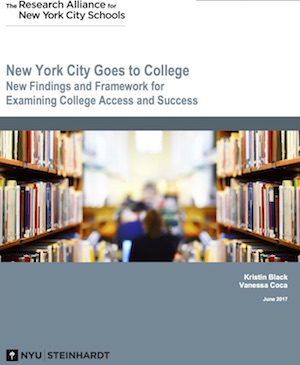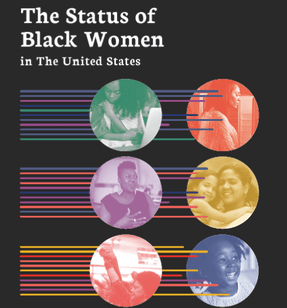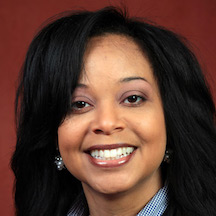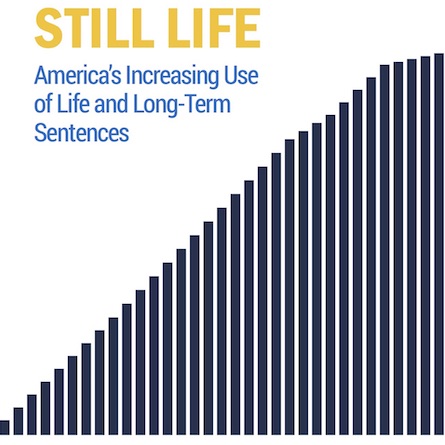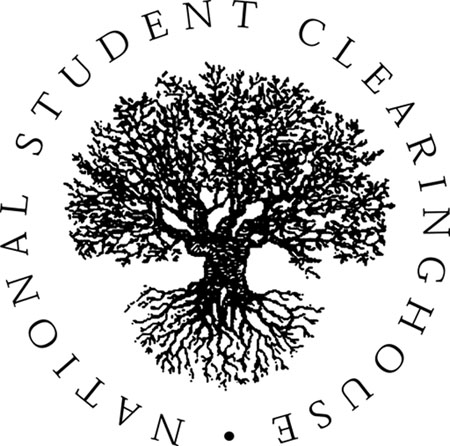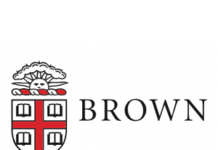New Report Examines the Persisting Racial Wealth Gap Among U.S. Households
A new report from the Center for American Progress finds that in 2016 the median wealth of Black households led by a person who was at least 25 years old was $13,460. For similar White households the median wealth was $142,180.
The Racial Gap in High School Completion and Dropout Rates
A new report from the U.S. Department of Education finds that in 2014 7.4 percent of all Blacks ages 16 through 24 were not enrolled in school and did not have a high school diploma or equivalent certificate. For Whites the figure was 5.2 percent.
Census Reports New Data on Same-Sex and Opposite-Sex Married and Unmarried Couples
In 2016, there were nearly 57 million married opposite-sex couples in the United States. Only 7 percent were Black. Blacks made up 5.5 percent of male same-sex couples and 9.8 percent of all female same-sex couples.
Race Determined to Be a Major Factor for Employment of Breast Cancer Survivors
In a study conducted at Washington University in St. Louis, the data showed that African-American patients were four times more likely to leave the workforce despite fighting a cancer with high survival rates than was the case for White patients of the same age.
Center for American Progress Addresses Racial Disparity in School Discipline
A new study that shows that in New York and Los Angeles - the nation's two largest school districts - students were expelled or suspended for a total of 47,558 days during the 2016-17 school year. These school districts are predominantly Black and Hispanic.
The Racial Gap in Advancement Placement Test Scores
The average score on Advanced Placement examinations for African American students in 2017 was 2.03. On the AP scoring system of 5 to 1, a score of 2 is equivalent to a grade of D in a college-level course. For White students the average score on all AP tests was 3.02, roughly equivalent to a letter grade of C.
The Large Racial Gap in Medical School Faculty
Data from the Association of American Medical Colleges show that in 2016 there were 5,075 Black or African American faculty at U.S. medical schools. They made up just 3 percent of all faculty members at medical schools. Blacks made up just 1.6 percent of all full professors at U.S. medical schools in 2016.
New Report Examines the Racial Gap in Degree Attainments in the United States
According to a new report from the Department of Education, during the 2015-16 academic year, African Americans earned 570,354 degrees and certificates at degree-granting institutions in the United States. This was 11.7 percent of all awards.
The Nationwide Racial Gap in College Graduation Rates
The Black student college graduation rate of 46 percent was 23 percentage points lower than the rate for Whites and 31 percentage points below the rate for Asian Americans. The Black student graduation rate trailed the rates for Hispanics by 14 percentage points.
Study Finds Widespread Discrimination Against Older Black Adults With Chronic Disease
A new study finds that one of five elderly patients with chronic disease reported that they had experienced discrimination by health care providers. Blacks reported higher rates of discrimination but the racial gap has narrowed.
The Digital Divide May Be Contributing to the Racial Gap in Health Disparities
Scientists at the University of Kansas are studying the barriers keeping low-income African-American older adults from adopting technology and seeking health information online. They found that digital literacy skills represented more of a barrier to online healthcare resources than access to digital technology.
Major Study Finds Racial Gap in Tobacco Use and Tobacco-Related Health Disparities
Smoking cigarettes and the use of other tobacco products had declined significantly in the United States over the past several decades. But tobacco-related health disparities persist for African Americans and other ethnic groups.
A Smaller But Still Significant Racial Gap in Home Computer Use
In 2015, 88 percent of non-Hispanic White households had a computer in the home. For Blacks, only 80.1 percent of all households had a home computer. Thus, nearly one in five Black households did not have a home computer.
Racial Differences in Mobility Rates in the United States by Educational Attainment
Mobility rates were similar for Black and White high school dropouts and college graduates. But there was a much larger racial gap for high school graduates and those with a graduate or professional degree.
African Americans Underrepresented in College Athletic Leadership Posts
The Institute for Diversity and Ethics in Sport at the University of Central Florida found that the academic and athletic administrations at the 130 colleges and universities that make up the NCAA's Division I Football Bowl Subdivision are overwhelmingly White and male.
Law Professors Look to Narrow the Racial Gap in Broadband Internet Access
Olivier Sylvain, an associate professor of law at Fordham University in New York and Sheila Foster, a professor at the Georgetown University Law Center, are leading the legal team of a project that hopes to bring broadband internet access to low-income residents in Harlem.
Americans Are Unaware of the Vast Racial Disparities in Economic Well-Being
The researchers weighed participants’ estimates on several economic indicators against federal data and found that average estimates of current levels of racial economic equality exceeded reality by roughly 25 percent.
University of Georgia Led Study Examines Huge Racial Disparity in Felony Convictions
The study determined that African American men were five times as likely as the general population to have served time in prison. The study also found that 8 percent of the overall population had been convicted of a felony at some point in their lives. But the rate for African American men is 33 percent.
Study Examines the Racial Wage Gap for Faculty at Public Universities
Black faculty earned lower salaries, on average, compared to White faculty — approximately $10,000 to $15,000 less per year. The authors found that wage gaps were largely due to three factors: amount of work experience, research productivity and field of expertise.
The Large Racial Poverty Gap and Its Impact on Higher Education
The U.S. Census Bureau has released its annual report on poverty in the United States. The report shows that in 2016, 9,234,000 African Americans were living below the official poverty line in the United States. This was 22 percent of the entire Black population.
A Slight Improvement in the Still Large Racial Gap in Median Household Income
The median income of Black households in the United States in 2016 was $39,490. For non-Hispanic White households in 2016, the median income figure was $65,041. Despite a small improvement this year, the racial gap in median income has remained virtually unchanged for nearly a half century.
The Huge Racial Gap in College Readiness as Measured by the ACT Test
Some 35 percent of Whites who took the ACT test were deemed college ready in all four areas of English, mathematics, reading, and science. For Blacks, only 6 percent of all test takers were deemed college ready in all four areas.
Mandatory Free College Entrance Examinations Can Boost Enrollments of Low-Income Students
The data showed that that for every 10 students from low-income families who took a college entrance exam before they were mandatory, there were an additional five students who didn’t take the test but who would score well enough to get into college if they did.
Tracking the Educational Progress of Black Millennials
The National Center for Education Statistics has released a new report on the progress made by students who were sophomores in high school in the year 2002 over the next decade. The report reveals several differences between Black and White students that may be of interest.
New York City Public Schools Make Progress in College Readiness But Racial Gap Remains
For Black students in ninth grade in 2008, 76.6 percent graduated from high school and 56.3 percent enrolled in college. For White students in the ninth grade in 2008, 82 percent graduated from high school and 71 percent enrolled in college.
New Report Examines the Status of Black Women in the United States
A new report, issued by the Institute for Women's Policy Research, finds that despite significant progress in higher education, voter participation, and business ownership, Black women continue to lag behind other women in many socioeconomic indicators.
Higher Education Does Not Improve Health Indicators for All Racial Groups
A University of Michigan led study reveals that Black men with higher education did not show better indicators of body mass index, sleep patterns, or physical activity. Higher education did not show a benefit for improving body mass index for Black women.
A Statistical Portrait of First-Year Students at Black Colleges and Universities
Many HBCUs are affiliated with conservative religious organizations. Given this fact, it is no surprise that African-American students at these colleges are more likely to hold some conservative views and positions than African-American college students generally.
Eliminating the Racial Gap in Infant Mortality Is Achievable, University Study Says
A new study shows that in 18 states, the racial gap in infant mortality rates is on track to be eliminated by the year 2050. The study notes that if the racial gap was eliminated, an estimated 4,000 lives of Black babies would be saved.
The Racial Gap in School Discipline Is Widest for Girls
The study of middle and high school students in a large urban district by researchers at Indiana University and the University of Kentucky, found that Blacks girls are three times as likely as White girls to be sent to the principal's office.
Huge Racial Disparity in Prisoners Serving Life Sentences
According to a new report from The Sentencing Project, nearly one half of life and virtual life-sentenced prisoners are African American. In Alabama, Georgia, Illinois, Louisiana, Maryland, Mississippi, and South Carolina two thirds or more are African American.
Employment and Unemployment Rates by Race for Young College Students
For 16- to 24-year-old Blacks enrolled in college, 7.6 percent were actively seeking work but couldn't find it. The unemployment rate for White college students in this age group was 5.7 percent.
New Report Confirms the Large Racial Gap in College Completion Rates
A new report from the National Student Clearinghouse Research Center finds that for students entering college in 2010, more than two thirds of White students, 67.2 percent, earned their degree within six years. This was more than 21 percentage points higher than the degree completion rate for African Americans.
Boston College Reports Address How Race Impacts Economic Opportunity and Mobility
The reports address research related to The Opportunity Project, launched by the Obama administration in 2016. The project was designed to provide data to civic and community leaders on topics such as job creation, housing, transportation and education.
University of New Hampshire Study Finds Persisting Racial Gap in Child Poverty
More than one third of all African American children continue to live in poverty. In 2015, 36.5 percent of all Black children lived in families below the poverty line. This is more than three times the rate for non-Hispanic White children.
The Growing Racial Gap in Home Ownership
Many American families use the equity in their home to finance the higher education of their children or grandchildren. Since this source of wealth is less available to Black families, this places African Americans at a disadvantage in financing higher education.






